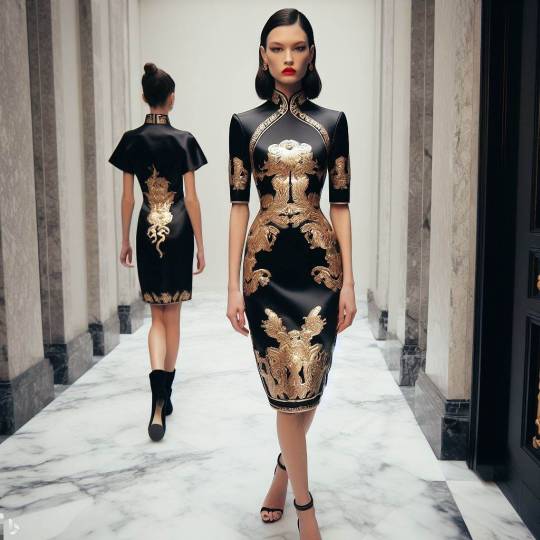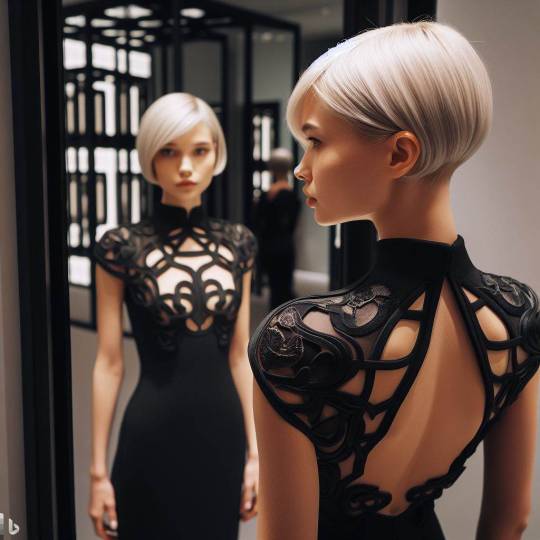#qipao inspired
Text
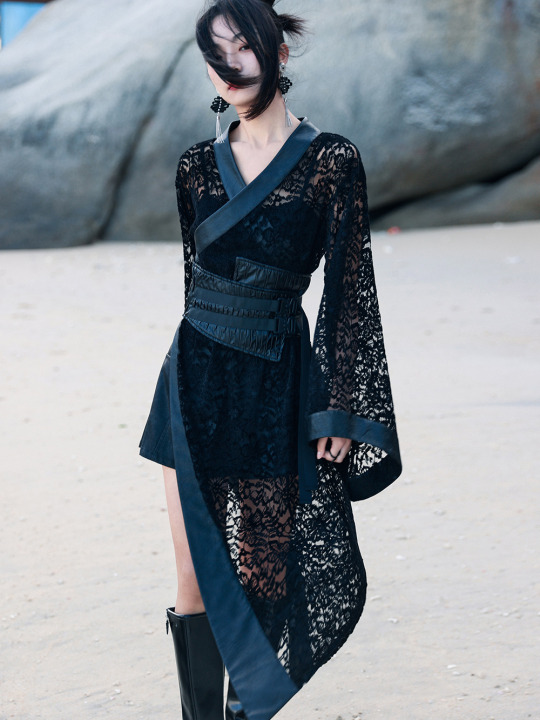

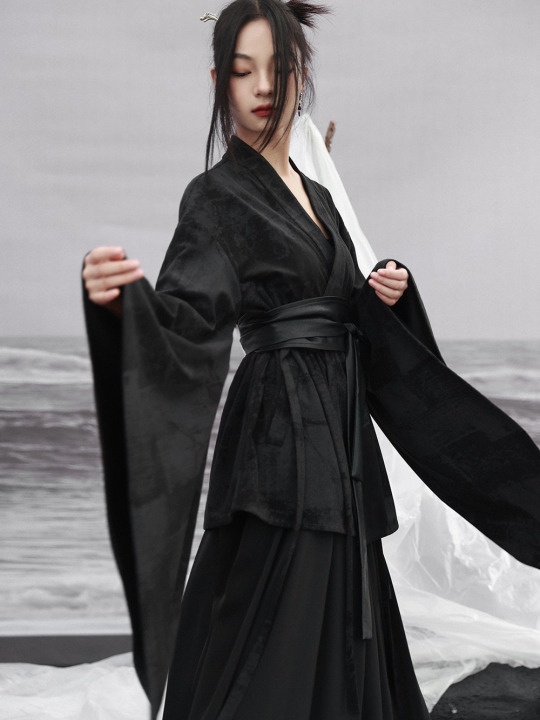





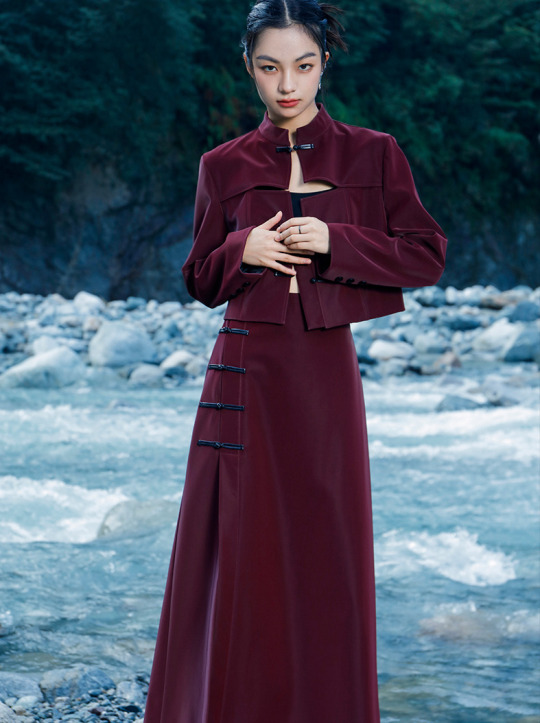
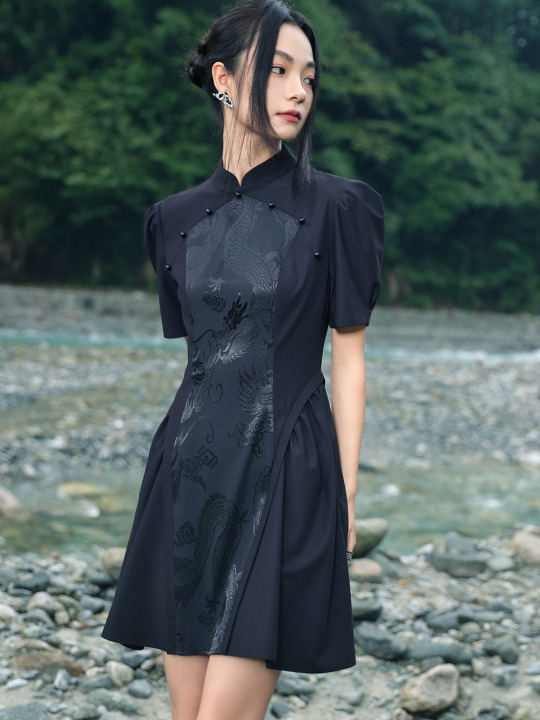





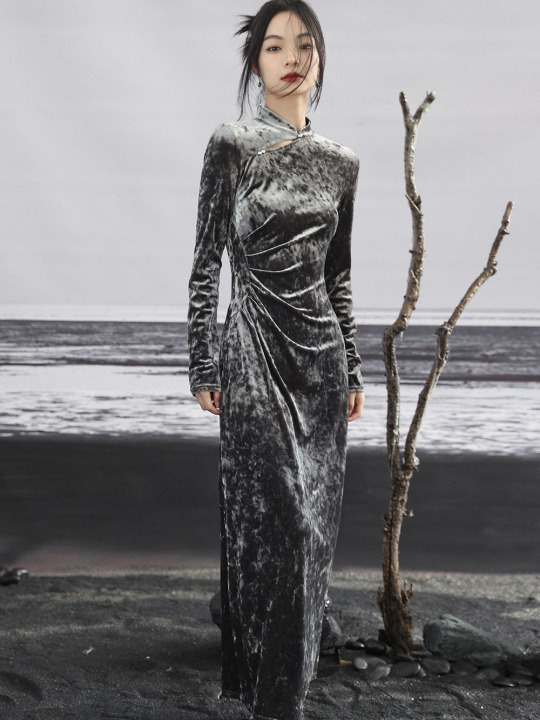

Since there's quite a lot of interest in Chinese-inspired cyberpunk and adjacent aesthetics, just wanted to share these neat "Chinese style meets the Matrix"-esque looks from popular brand 大青龙肆/Da Qing Long Si. There's also an English website here.
#大青龙肆#daqinglongsi#hanfu inspired#hanyuansu#qipao inspired#and etc#guofeng#xinzhongshi#cyberpunk#taobao#recs#chinese fashion#chinese clothing#chinese culture#china
1K notes
·
View notes
Photo


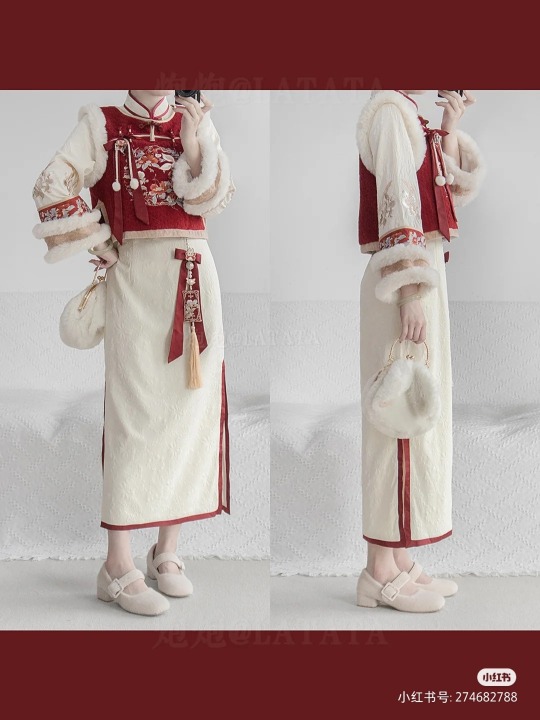

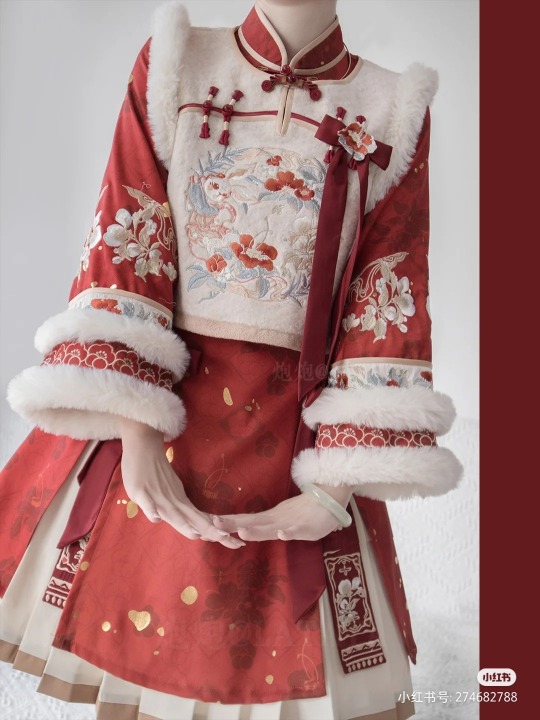
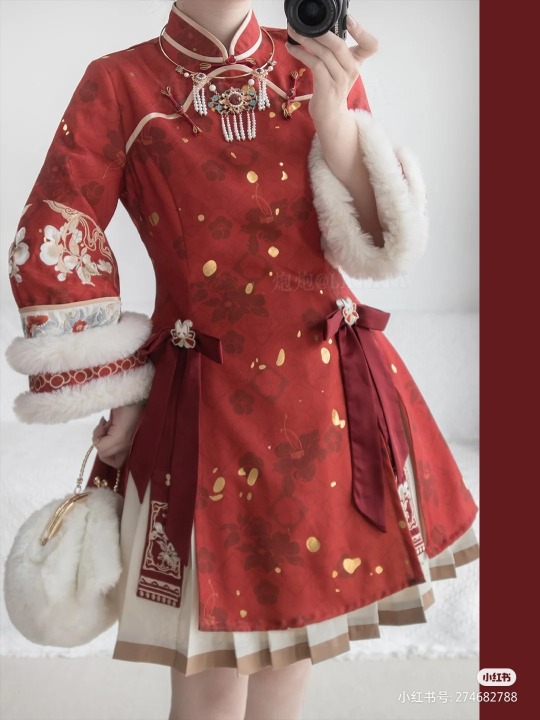



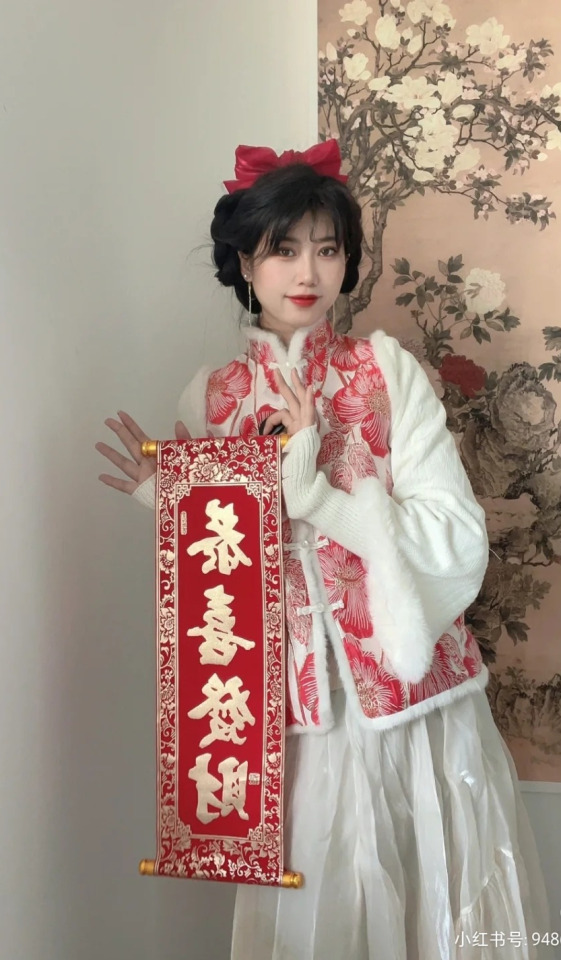
chinese fashion for new year
738 notes
·
View notes
Text
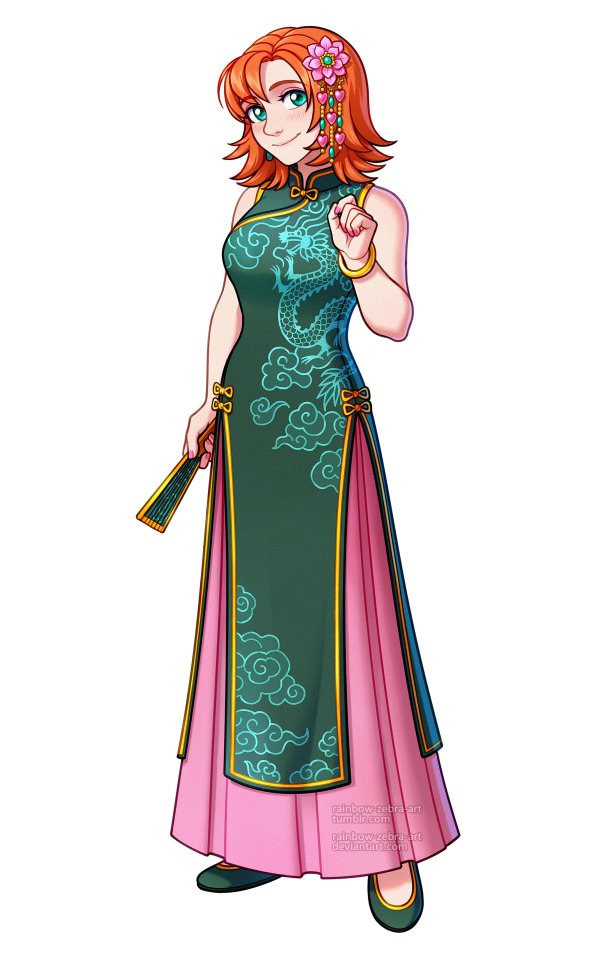



Full-color character commission for CodyMacArthurFett!
We started with the idea of "what kind of Chinese-inspired dress Nora would wear to her wedding with Lie Ren". And it escalated quickly! Designing these outfits turned out to be a tricky task too. So tricky that Cody decided to turn two of three options into finished pieces 😄
For both outfits, it's the color combination of Ren's green and Nora's pink color. The cloud embroidery is supposed to allude to Nora's theme and Semblance (thunder and lightning). Adding the dragon image was suggested by Cody, and I think it's very appropriate for the RWBY universe, keeping in mind the two Gods who created Remnant. The hair jewelry includes various lotus variations (Ren's symbol) and the first one also includes hearts (Nora's symbol).
Form-wise, the first dress is inspired by Chinese qipao, but with a more "fantasy" rendition. Eventually, we came to the thought that it can fit into the "fancy going out dress" narrative more. The second is inspired by one of the hanfu types, also known as qiyao ruqun (waist-positioned dress). And it has a wedding headdress.
Well, that's enough of my obscure chatter!
Let me and Cody know: which outfit do you like more and why? We're collecting statistics at this point! 😁
P.S. With Cody's permission, I published all the sketches for this commission on my Boosty: https://boosty.to/rainbowzebra
#rwby#rwby fanart#nora valkyrie#renora#chinese#chinese dress#qipao#hanfu inspired#headdress#chinese dragon#commission#art commissions
907 notes
·
View notes
Text

rip to bruce but if i fumbled her i would literally kill myself
#wrote this caption before trying to figure out if the artist intended for this to be a qipao or not#settled on the fact that he did (the mandarin collar sealed it) and spent 2 hour reading a brief history of them#and terminology to try and make an accurate ID but my 'ohmygof she's so fucking hot' got QUICKLY replaced with anger#like in 1930 Shanghai there were so many designs that did feature more form fitting fabric & high side slits#theres so many general gorgeous designs with the elaborate pankous and embroidery and beading that you could of taken inspiration from#and you make it more or less a unitard. you go hm close enough just to sexualize her further#like yeah she's gorgeous my caption stands but the disrespect and disregard is so... you know.#anyways. messy little ramble over. if im bruce wayne im killing myself and also thepankou(.)com has really beginner friendly posts talking#about the history of them & different (general) region styles & the use of qipaos in different media and exhibits. also a GORGEOUS wardrobe#crypt's panels#talia al ghul
102 notes
·
View notes
Text
🐉新年快乐🧧
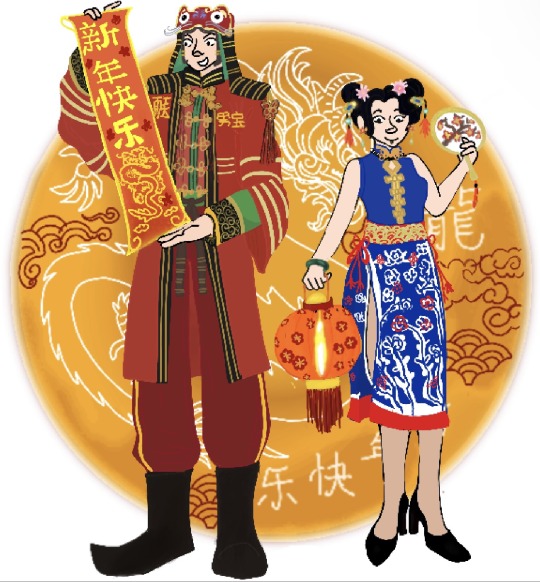
Happy Lunar New Year 🧧 🏮from Yong Bao & Hong Mei
Background that I copied from Freepik Premium Vector
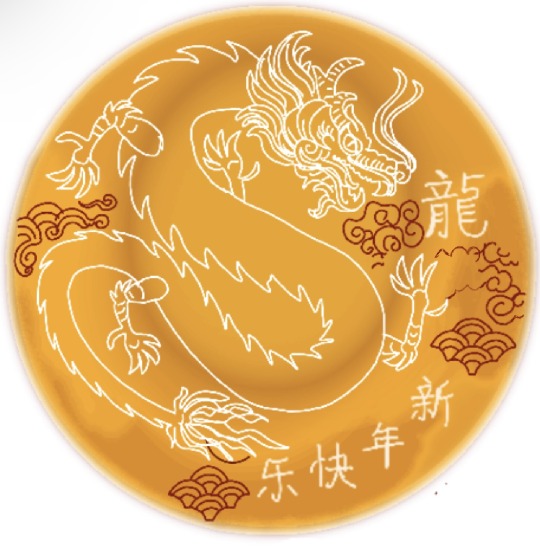
#ttte#ttte hong mei#ttte yong bao#yong bao#hong mei#my art#my art <3#my art stuff#apologies if it’s a bit late though from what I’ve seen Chinese lunar new year doesn’t end till the 15th#I’m hope I’m saying it correctly it’s mandarin and I got inspired by many artists for their designs alongside research I hope I did well#Was inspired by pcjelly on pixiv for Yong bao holding the banner im still working on my Valentine day ships so stay toon 💌 💘 💝#been really busy with school and work and art block I could’ve put more effort on this piece but I’d dont wanna delay added more flowers to#hong mei’s cheongsam/qipao and Yong bao tiger is on his back I couldn’t decide how to place the tiger 🐅
23 notes
·
View notes
Text


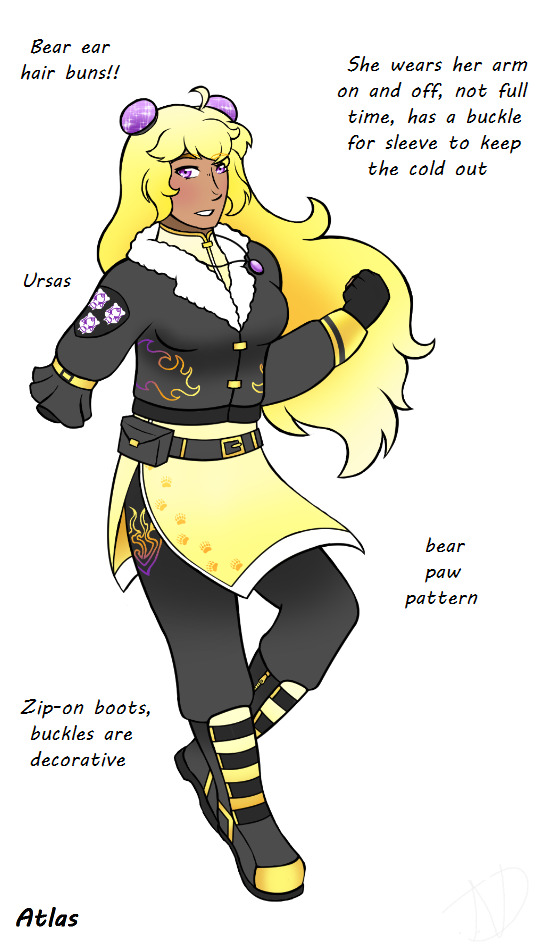

Antares! Yang outfits, with some design notes explaining thought processes or pointing out smaller details.
#rwby#yang xiao long#rwby redesign#rwby au#rwby designs#sketches#same thing with Ruby I ended up ADORING the Vacuo look but the Mistral one is a close second#yang#scorruby#definitely a heavily stylised qipao on all of them but it was my inspiration
84 notes
·
View notes
Text
been thinking abt this for a while since i first heard it was even a complaint n ngl the chinese fanbase is right why Hasn’t hoyoverse capitalised on the revived interest in recent years (both domestically AND internationally) in hanfu style clothing??? two years and over a dozen liyue characters released but still nobody w even Some hints of that in their design?? like who Wouldnt eat it up on a character what the hell. hanfu style clothing is like universally gorgeous
#x#gi posting#the obvious answer here is it’s more difficult to sell sexualised i guess but yae miko’s outfit is inspired by japanese shrine maidens and#she’s still got plenty skin showing so i’m sure they could manage to find a way lmao#the other ig is animation issues bc they really don’t like giving long robes/clothing pieces that aren’t divided i#/cut into two in some way but they’re a company that rakes in multimillions constantly. again. i’m SURE they could find a way???#like we have ningguang in a qipao (two if u include her alt skin actually) hanfu would be sooooo pretty#i’ve seen plenty of fanart of diff liyue characters drawn in hanfu n everytime im like omg…. beautiful#WAIT I JUST REMEMBERED#didnt xingqius little drawn self in the painted fan wear smth like hanfu?? 😭😭😭 hyvs mocking its fans fr#apparently it’s like actually something the cn fanbase has been asking for since forever but hyvs hasn’t listened at all. for some reason#edit: it wasn’t a fan it was the folding screen. from the irodori festival. i think i was thinking of the fan zhongli gave us that one time#for some reaso LMAO#anyways my point still stands
9 notes
·
View notes
Note
So just wanted you to know, "yellow" is a common slur against Asian Americans and so Huang Feng, being a Bruce Lee (whos an Asian man) clone and all could raise some eyebrows to your intentions.
And before i get accused of white knighting, i am Asian
Thanks for reaching out! This is honestly something that might be important to discuss and I appreciate your attempt at broaching the subject delicately.
More after the jump.
So to start. I am also Asian. Specifically Chinese American.
As an American born Chinese, I have a weird relationship with my Asian heritage. I have a bad accent when I speak Chinese and most of my upbringing and cultural understanding is very American and western-centric. So I have certain biases at play here that I fully acknowledge. My experience is not universal. But these characters are drawn from that experience.
Huang Feng is a reference to Bruce Lee's performance as Kato in the Green Hornet. Dà Huángfēng being a Chinese term for a hornet.
The character is also narratively implied to be a secret moonlighting identity for the Yellow Ranger in my made-up sentai team. (Who, due to my own decision to always refer to the characters by their Ranger color, is literally just called Yellow by the other members of the cast.)
This is also a reference. Specifically to one of my greatest inspirations, Thuy Trang (Rest in Peace), who played the original Mighty Morphin Yellow Ranger. She was one of the first "Cool Asian Characters" that I encountered in media targeted at me as a child, problematic color choice aside. I sincerely adored her and her giant robot Saber-Toothed Tiger.


To be honest I have a complicated relationship with "Asian Themed" characters in media. So often saddled with cliché stereotypes: Martial Arts, dumplings, nunchucks, etc etc.
But the thing is, even as I roll my eyes whenever I see the Fighting Game character that is The Chinese One who wears a rice hat and a qipao. Or when one is literally just Bruce Lee. I do also immediately main that character.
It's a bit of a guilty pleasure. Taking what representation I can get with mixed feelings. Similar to my enjoyment of sexy anime girl art even though it's all rooted in pretty uncomfortable sexist and objectifying aesthetics.
A lot of my work comes from a place of exploring my own sexuality/identity. These characters are, partly, my own attempt to explore Asian themes and ideas for myself.
I would love to say that I'm trying to "reclaim" the term or something but I'm just some internet artist drawing cute anime girls and monster smut. For me, playing with these clichés is just another way of being self-indulgent.
Not really defending these creative choices so much as explaining my perspective on them. I totally understand if all this turns folks off! I fully respect those who don't vibe with my work and wish them all the best. It's a big internet and I'm sure they can find something super great to enjoy elsewhere!
Anyway, sorry for the long rambly post. Despite the fact that I'm posting this on Tumblr, I am not super mentally equipped to engage in Discourse, so forgive me if I don't respond to the tags on this.
So I'll just leave y'all with a neat article by Kat Chow discussing the history and usage of the color Yellow in regards to Asian Identity.
974 notes
·
View notes
Text


Historically inspired Ningguang
I based this semi-historical fashion for Ningguang on images of Empress Cixi. I know it’s usual to not draw Ningguang in a qipao but I wanted to base her look on a real woman in history in a position of power if you will. Ningguang is a powerful leader and important player in the commercial success of Liyue. Also the very long nail/finger guards are very iconic for both.
I am the artist! Do not post without permission & credit! Thank you! Come visit me over on: instagram.com/ellenartistic or tiktok: @ellenartistic
#ninngguang#lady ningguang#genshin impact#ellenart#lnart#character design#costume design#digital illustration#historically inspired#video games I can't stop playing#historical inaccuracies#redesigning heroines
269 notes
·
View notes
Note
Please can you explain the difference of meaning between hanfu and huafu ? Sorry if you already got the question
Hi, thanks for the question, and sorry for taking ages to reply! (hanfu photo via)
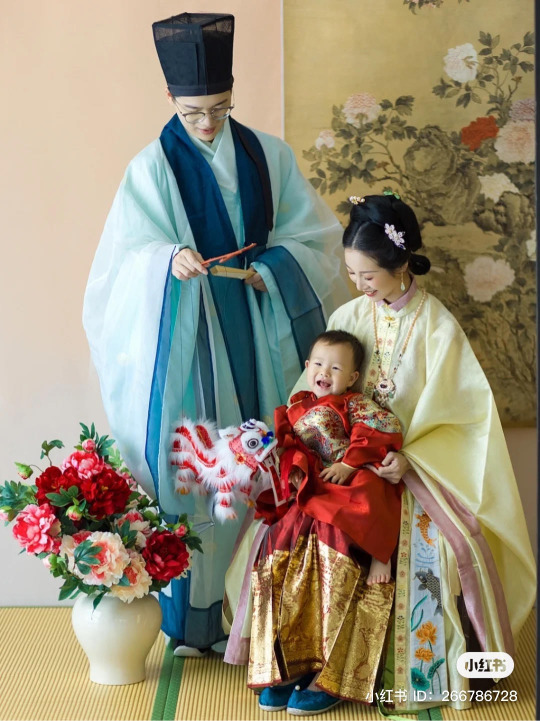
The term “hanfu” (traditional Chinese: 漢服, simplified Chinese: 汉服) literally means “Han clothing”, and refers to the traditional clothing of the Han Chinese people. “Han” (漢/汉) here refers to the Han Chinese ethnic group (not the Han dynasty), and “fu” (服) means “clothing”. As I explained in this post, the modern meaning of “hanfu” is defined by the hanfu revival movement and community. As such, there is a lot of gatekeeping by the community around what is or isn’t hanfu (based on historical circumstances, cultural influences, tailoring & construction, etc). This isn’t a bad thing - in fact, I think gatekeeping to a certain extent is helpful and necessary when it comes to reviving and defining historical/traditional clothing. However, this also led to the need for a similarly short, catchy term that would include all Chinese clothing that didn’t fit the modern definition of hanfu -- enter huafu.
The term “huafu” (traditional Chinese: 華服, simplified Chinese: 华服) as it is used today has a broader definition than hanfu. “Hua” (華/华) refers to the Chinese people (中华民族/zhonghua minzu), and again “fu” (服) means “clothing”. It is an umbrella term for all clothing that is related to Chinese history and/or culture. Thus all hanfu is huafu, but not all huafu is hanfu. Below are examples of Chinese clothing that are generally not considered hanfu by the hanfu community for various reasons, but are considered huafu:
1. Most fashions that originated during the Qing dynasty (1644–1911), especially late Qing, including the Qing aoqun & aoku for women, and the Qing changshan and magua for men. I wrote about whether Qing dynasty clothing can be considered hanfu here. Tangzhuang, which is an updated form of the Qing magua popularized in 2001, can also fit into this category. Below - garments in the style of Han women’s clothing during the Qing dynasty (清汉女装) from 秦綿衣莊 (1, 2).
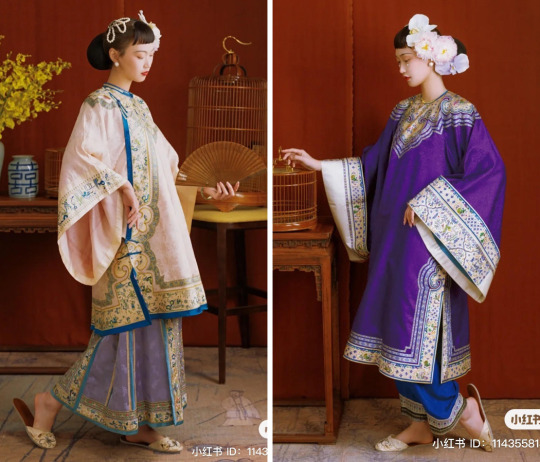
2. Fashions that originated during the Republican era/minguo (1912-1949), including the minguo aoqun & aoku and qipao/cheongsam for women, and the minguo changshan for men (the male equivalent of the women’s qipao). I wrote about why qipao isn’t considered hanfu here. Below - minguo aoqun (left) & qipao (right) from 嬉姷.

Below - Xiangsheng (crosstalk) performers Zhang Yunlei (left) & Guo Qilin (right) in minguo-style men’s changshan (x). Changshan is also known as changpao and dagua.
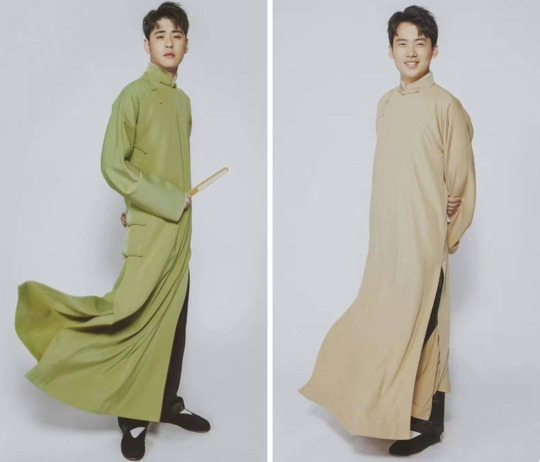
3. Qungua/裙褂 and xiuhefu/秀禾服, two types of Chinese wedding garments for brides that are commonly worn today. Qungua originated in the 18th century during the Qing dynasty, and xiuhefu is a modern recreation of Qing wedding dress popularized in 2001 (x). Below - left: qungua (x), right: xiuhefu (x).
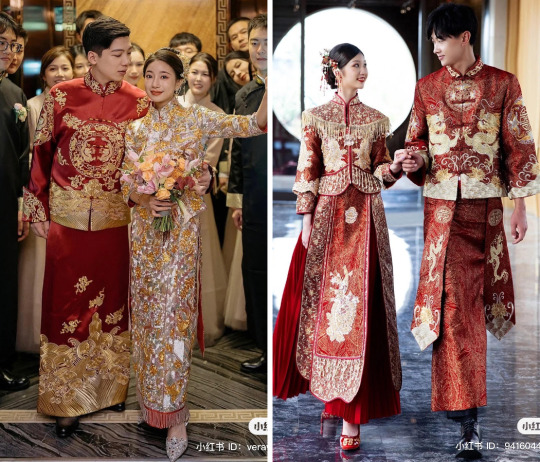
4. Modified hanfu (改良汉服/gailiang hanfu) and hanyuansu/汉元素 (hanfu-inspired fashion), which do not fit in the orthodox view of hanfu. Hanfu mixed with sartorial elements of other cultures also fit into this category (e.g. hanfu lolita). From the very start of the hanfu movement, there’s been debate between hanfu “traditionalists” and “reformists”, with most members being somewhere in the middle, and this discussion continues today. Below - hanyuansu outfits from 川黛 (left) and 远山乔 (right).

5. Performance costumes, such as Chinese opera costumes (戏服/xifu) and Chinese dance costumes. These costumes may or may not be considered hanfu depending on the specific style. Dance costumes, in particular, may have non-traditional alterations to make the garment easier to dance in. Dunhuang-style feitian (apsara) costumes, which I wrote about here, can also fit into this category. Below - left: Chinese opera costume (x), right: Chinese dance costume (x).
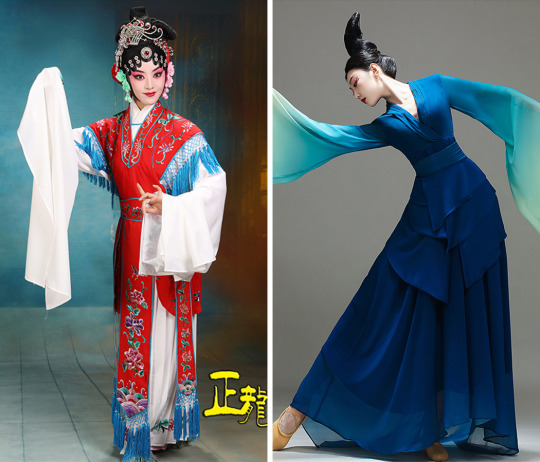
6. Period drama costumes and fantasy costumes in popular media (live-action & animation, games, etc.), commonly referred to as guzhuang/古装 (lit. “ancient costumes”). Chinese period drama costumes are of course based on hanfu, and may be considered hanfu if they are historically accurate enough. However, as I wrote about here, a lot of the time there are stylistic inaccuracies (some accidental, some intentional) that have become popularized and standardized over time (though this does seem to be improving in recent years). This is especially prevalent in the wuxia and xianxia genres. Similarly, animated shows & games often have characters dressed in “fantasy hanfu” that are essentially hanfu with stylistic modifications. Below - left: Princess Taiping in historical cdrama 大明宫词/Palace of Desire (x), right: Wei Wuxian and Lan Wangji in wuxia/xianxia cdrama 陈情令/The Untamed (x).

7. Any clothing in general that purposefully utilizes Chinese style elements (embroidery, fabrics, patterns, motifs, etc). Chinese fashion brand Heaven Gaia is a well-known example of this. Below - Chinese-inspired designs by Heaven Gaia (x).
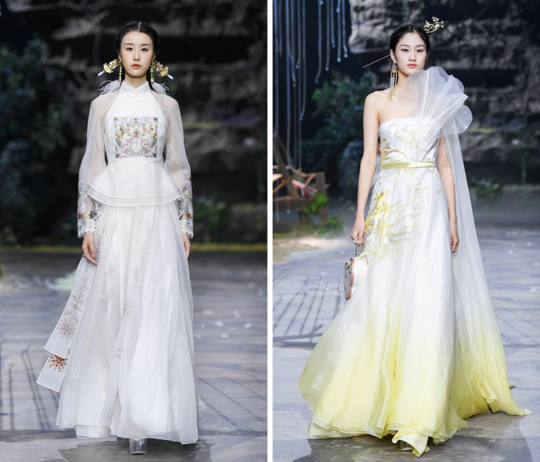
8. Technically, the clothing of China’s ethnic minorities also fit under the broad definition of huafu, but it’s rarely ever used in this way.
From personal observation, the term “huafu” is mainly used in the following situations:
1. Some large-scale events to promote Chinese clothing, such as the annual “华服日/Huafu Day”, will use “huafu” in their name for inclusivity.
2. For the same reason as above, Chinese clothing including hanfu will often be referred to as “huafu” on network television programs (ex: variety shows).
3. A few Chinese clothing shops on Taobao use “huafu” in their shop name. Two examples:
明镜华服/Mingjing Huafu - sells hanfu & hanyuansu.
花神妙华服/Huashenmiao Huafu - sells Qing dynasty-style clothing.
With the exception of the above, “huafu” is still very rarely used, especially compared to “hanfu”. It has such a broad definition that it’s just not needed in situations for which a more precise term already exists. However, I do think it’s useful as a short catch-all term for Chinese clothing that isn’t limited to the currently accepted definition of hanfu.
If anyone wants to add on or correct something, please feel free to do so! ^^
Hope this helps!
#happy 2023!#hanfu#huafu#terminology#language#hanfu movement#history#reference#ask#reply#>1000#chinese fashion#chinese culture#china
2K notes
·
View notes
Photo


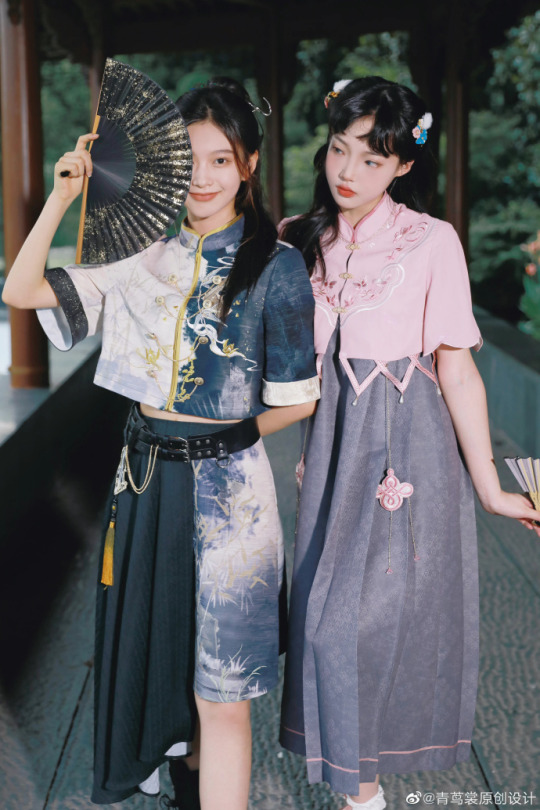
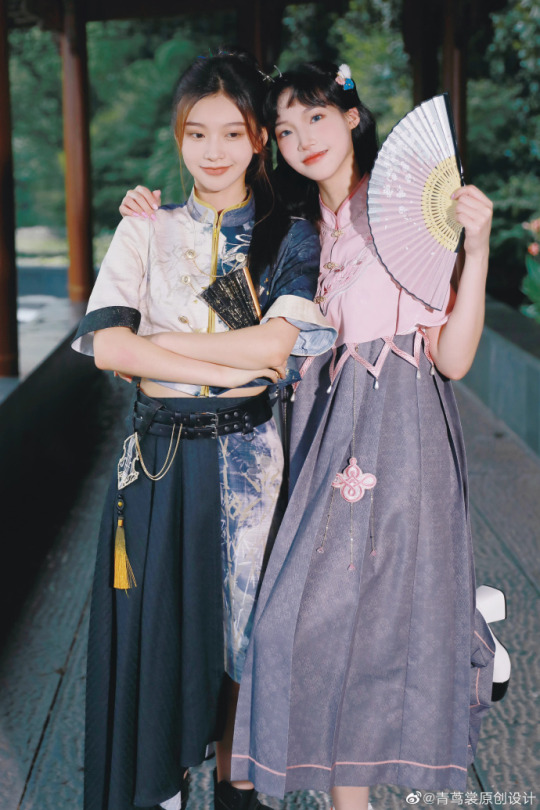






chinese guofeng国风 fashion by 青茑裳原创设计
435 notes
·
View notes
Text
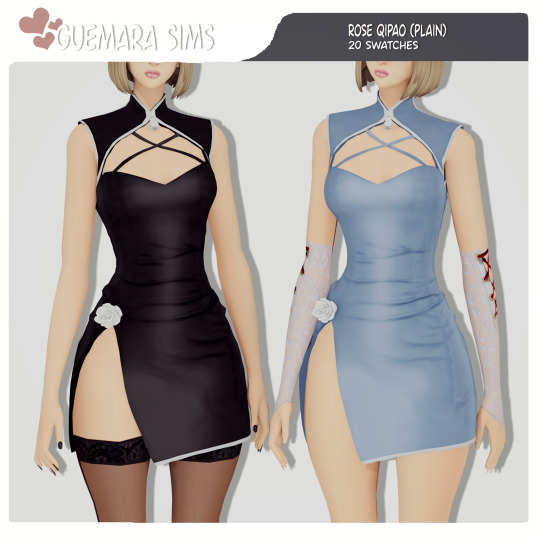


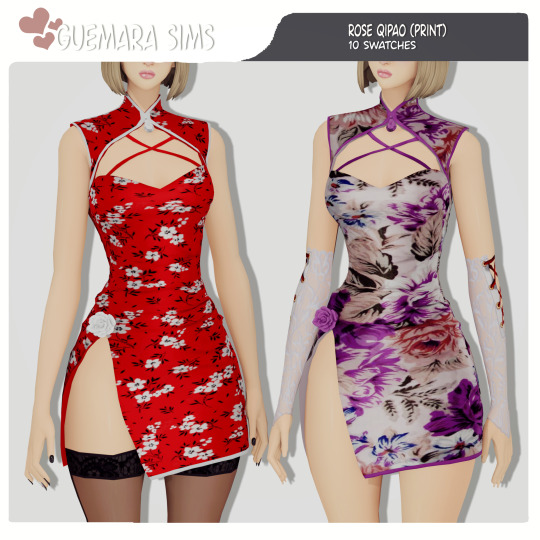
Introducing my Rose Qipao Dress for Sims 4! Embrace the allure of Asian-inspired fashion with this dress, with plain colors and prints adorned with vibrant floral and traditional Asian motifs. This dress features a daring leg slit and an elegant thigh-high flower detail, perfectly blending sensuality with cultural elegance. Whether your Sim is attending a special event or simply wants to make a statement, this Qipao dress is the ideal choice. Elevate your Sim's style and let them radiate beauty and confidence with my Rose Qipao Dress today!
New mesh, base game, 20 colors (plain), 10 colors (print), enjoy!
Thank you very much for your support!
Download (Patreon, early access)
#sims 4 cc#guemarasims#the sims 4 cc#sims 4#the sims 4#sims 4 fashion#sims 4 female cc#sims 4 finds#ts4#the sims custom content#sims 4 dress#ts4 custom content#ts4 cc#ts4cc#ts4 dress#sims 4 outfit#sims 4 goth#sims 4 anime#sims 4 asian#sims 4 asiatic
157 notes
·
View notes
Text
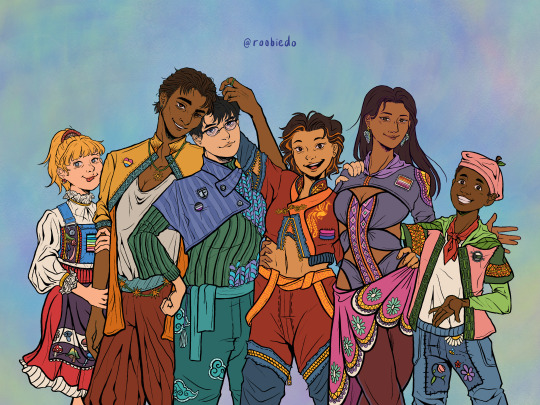
Happy Pride Month and (very belated) Solarpunk Aesthetic Week! I wanted to redesign my longtime OCs, so I decided to give them a thematic twist!
Self-indulgent details about their designs under the cut:
⸻⸻⸻⸻⸻
From left to right:
Mia
Based on the romantic/cottagecore style, and incorporating aspects of Eastern/Central European folk dresses, such as the Czech kroj. Her vest is made from recycled overalls and excess fabric from her apron. Her natural motif is fungi -- her bow and earrings are amanita mushrooms (if you squint, her skirt looks like one too), and the frills on her collar + sleeves are chanterelles!
Clyde
He's a bohemian kinda guy, so I kept his silhouette relaxed and unstructured + harem pants + accessories. The exception is his jacket, a union of 3 different garments made to loosely resemble traditional Indian clothing like the achkan. His natural motif is the sun - hence the warm tones, which is contrasted with splashes of teal, the colour of his aura (its a fictional superpower thing).
Glace
His style is more preppy/academia - turtlenecks and sweaters are his type, so I gave him 3! Sewn together in a visible mending-esque style (inspired by tumblr solarpunks and their fashion projects)! His palette is taken from the mlm flag, and there's subtle elements of a Korean hanbok - his collar, sleeve shape, sash and tassel. Rips in his pants are covered by cloud patches (his motif), all dyed to match the aesthetic!
Simmer
Her thing is streetwear with a cultural twist - her top combines a bomber jacket and a Chinese qipao/cheongsam. Her detachable sleeves are extended via sewn-on zippers (useful as her powers generate a lot of heat)! Her motif is the phoenix, with patterns on her shirt and collar, hand-decorated using the batik method. Her hair streaks are inspired by stripes on a tiger - Malaysia's national animal.
Axis
She's all about the y2k aesthetic, with translucent tights and a hoodie stylishly revamped to form a super crop top + a figure-hugging bodysuit. Her design is inspired by indigenous Andean fashion, such as the Ecuadorian pollera, which her skirt might be repurposed from. Her motif is butterflies, as seen in her earrings, the shape of her bodysuit, and the wing-like curves of her skirt.
Piper
Initially wanted a punk-ish vibe for him but he might be a bit too cute now oops! His jacket is a mashup of 3 different pieces, and his jeans are a patchwork of denim. He's got iconic looks from French fashion (beret and scarf), as well as some African designs (the vertical pattern I referenced looked like plant cells, but also like binary code? I thought it was so on theme)! His motif is obviously plants of all types!
⸻⸻⸻⸻⸻
Thank you for checking this out (especially if you got this far)!!! ♡♡♡
#art#artists on tumblr#character design#pride#solarpunk#fashion#culture#oc#wish i couldve finished this in time for solarpunk aesthetic week but. drawing is hard ;;#maybe i'll render it in the future#also! im not an expert on cultural clothing so please correct me if i got anything wrong! still learning!#roobiedoodle#the leftoverse#tl mia#tl clyde#tl glace#tl simmer#tl axis#tl piper
86 notes
·
View notes
Text
I can’t find the post I made about it before but consider 1920s-inspired tlok-era Kyoshi Warrior costumes.
Consider a flapper dress made entirely of body armor. Like this but green?

But with a qipao type torso/collar?
Also Kyoshi Warrior headdress in a 20s style? Delicious
10 notes
·
View notes
